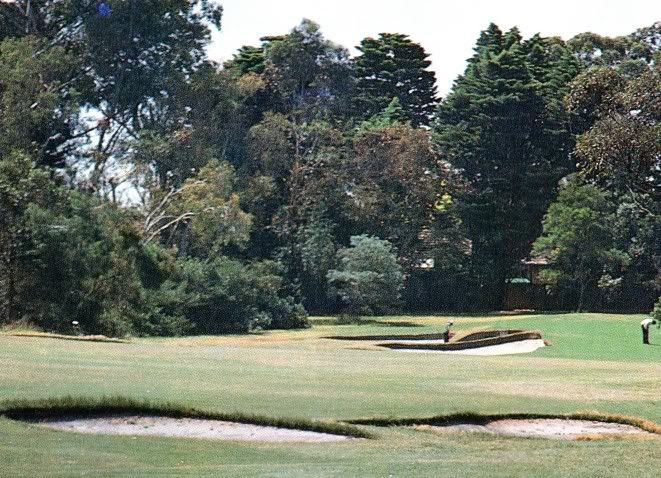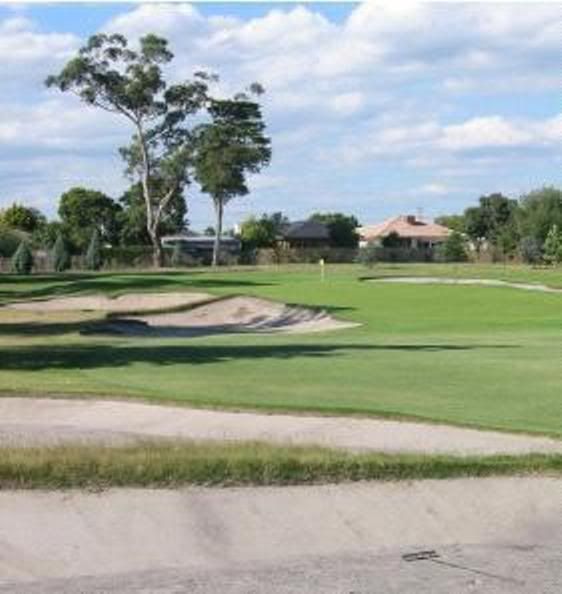I've been impressed by the posts of a number of contributors of before and after pictures involving tree removal. Sometimes this has been done to improve the turf quality, sometimes to improve the line of play and some times to improve aesthetics. Some times all 3.
From my limited experience, I have seen much achieved at courses through significant amounts of tree removal, significant change achieved by the selective removal of an odd tree and a freshening of the course by the removal of a few mere 'wallpaper' trees' (that middle story that just blocks everything out between the ground level and tree canopy.
I would like to start a range of case studies with two exhibits. If you like this post, please consider adding your own exhibits and include some comment about the severity of tree removal required for the change.
My first post is a course that I haven't seen in over 30 years, but I saw a picture of the hole recently. I barely recognised the hole. I'm sure the turf quality has improved as the trees removed are to the north of the green (southern hemisphere remember, so north blocks sunlight). The tree removal has been significant.
It is Yarra Yarra's 13th hole - a long par 4 with bunkers on the inside corner of the dogleg, approach bunkers on the left, greenside bunkers front lefyt and back right. A classic 'strategy'; long par 4. It was surrounded by cypress trees on all sides 30 years ago - not today by the looks of things. The before photo is again from Tom Ramsey's 25 Great Australian Golf Courses.
25 to 30 years ago - Yarra Yarra 13th hole (from shot point on rhs)

Today - Yarra Yarra 13th hole (past shot point on lhs)

The second case study is in my next post.
James B